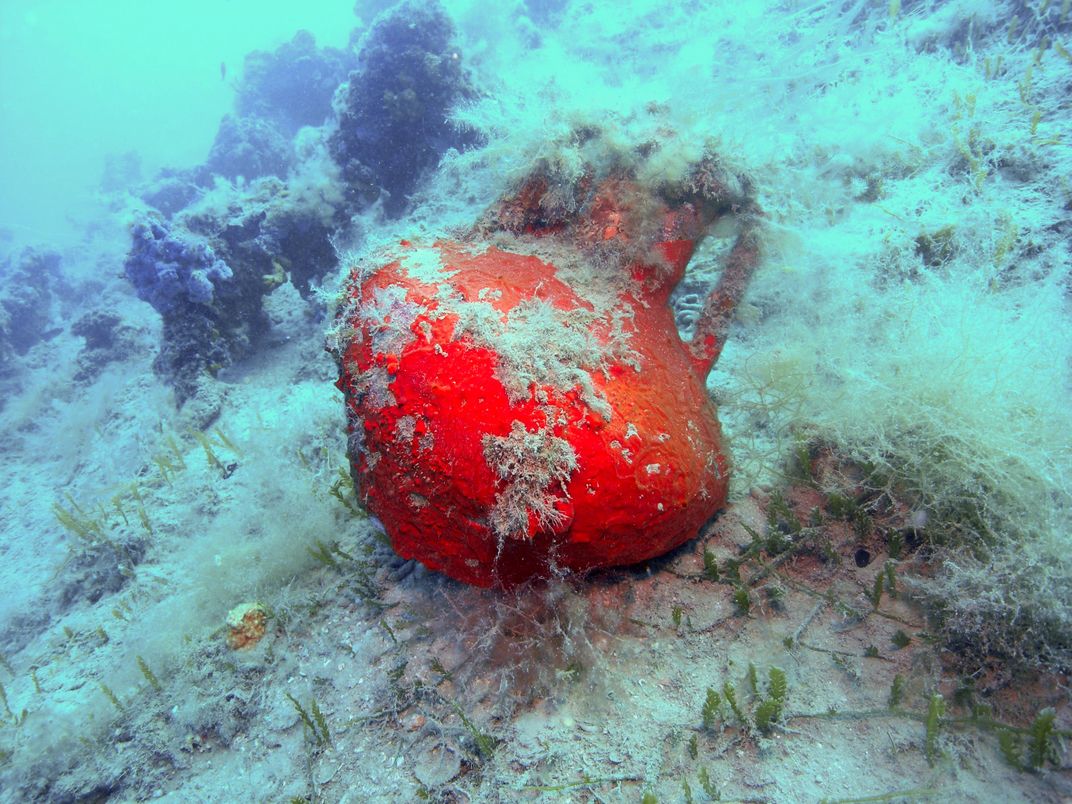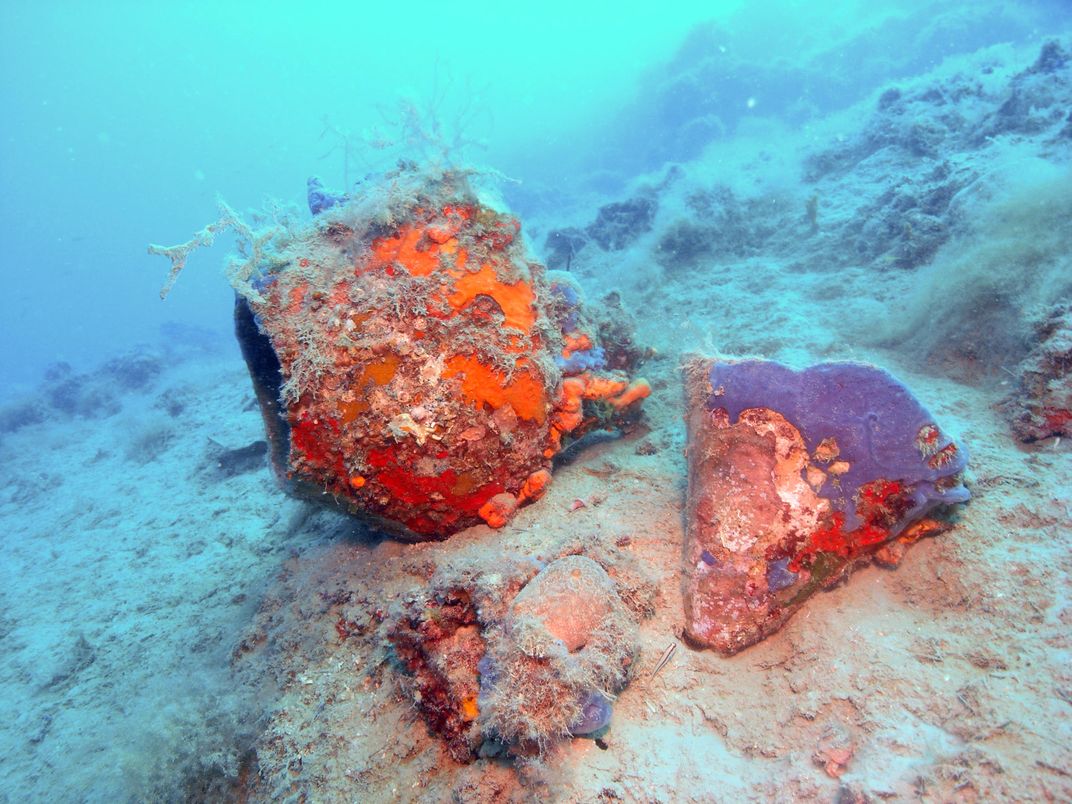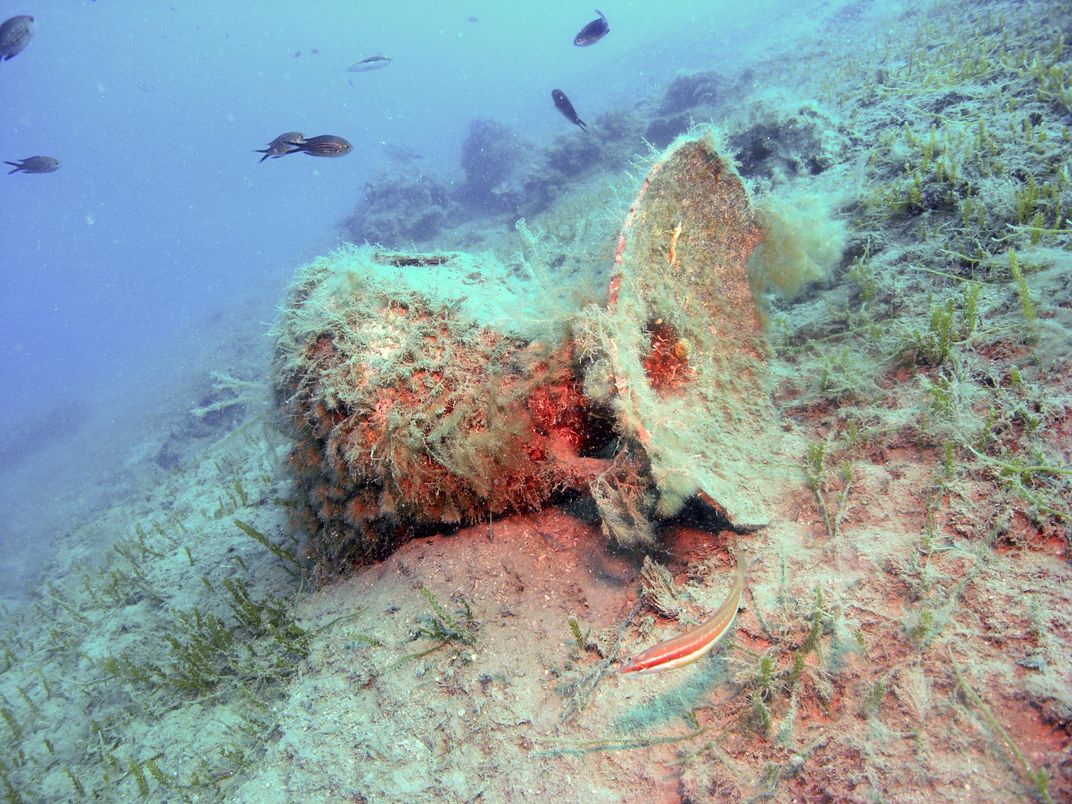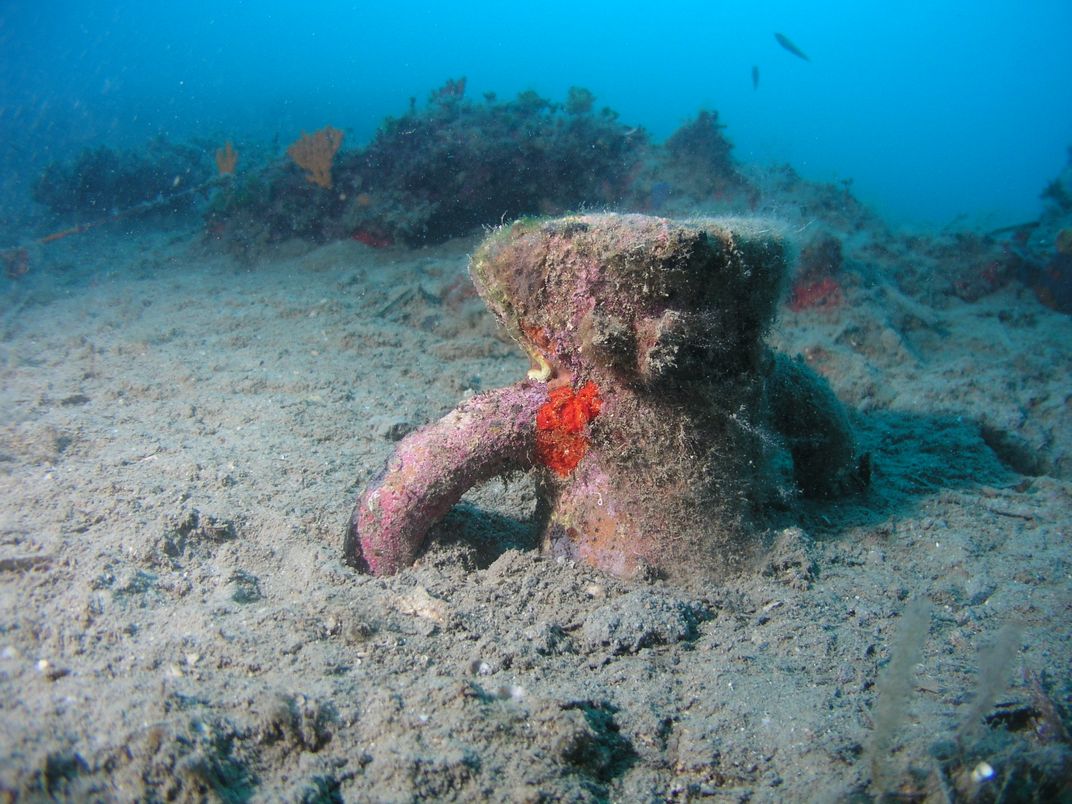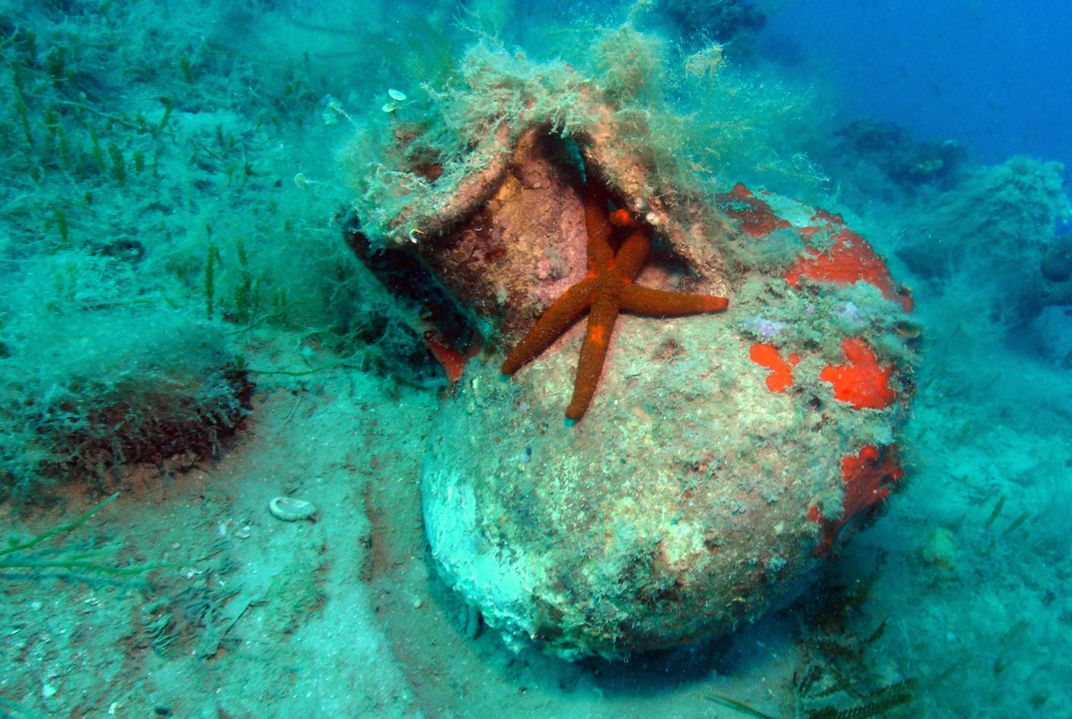Albania Wants to Show Off Its Shipwrecks
From 6th century B.C. Greek cargo ships to WWII wrecks, the Balkan nation is hoping to boost tourism by highlighting its underwater archaeology
Albania may not crack the list for top scuba-diving destinations in the world. The country doesn't even have a scuba diving industry. At least not now. But a new exhibit of photographs in the nation's capital Tirana by the Albania National Coastline Agency showing wrecks discovered along the Balkan nation’s coastline over the last decade aims to make underwater archeology part of the its tourism industry.
According to Llazar Semini at the Associated Press, since 2007 the non-profit RPM Nautical Foundation, in association with the Albanian government, has surveyed around one-third of the Albanian coast—part of the ancient region known to the Romans as Illyria. So far, they have discovered 38 previously unknown shipwrecks at the bottom of the Ionian Sea, including six boats that are at least 2,000 years old. In total, the wrecks along the 220-mile stretch of coast date from the 6th century B.C. until World War II.
Auron Tare, head of the Coastline Agency tells Semini that he hopes the exhibition of the research will help increase local interest in the area’s archeological resources and help spur tourism—and even scuba diving—to the nation’s coast.
“We have a lot of such archaeological underwater heritage but, so far, we have not known how to keep, preserve and use them,” Tare says.
According to Besar Likmet at Balkan Insight, since the fall of Communism parts of Albania’s once unspoiled coast have fallen victim to unregulated development, with high-rises and condos popping up unchecked. But in 2014, the government of Edi Rama, still the prime minister of Albania, began pushing for protection and sustainable development of the coast in hopes to turn it into a tourist attraction.
“Albania ranks last among Mediterranean countries when it comes to the benefits that come from tourism to its economy, with little or no visits from cruise ships and few yacht marinas,” Tare tells Likmet. “Although parts of the coast have been destroyed, it still has the chance to apply a new philosophy on how to develop coastal areas, away from what is termed ‘abusive’ tourism toward a more sustainable model.”
That’s why the National Coastline Agency was created in 2014, to help communities along Albania’s Ionian shore follow sustainable practices and bring the nation’s shore up to international standards. “Although this might sound like propaganda, I believe with the right model we can change the economic factors of coastal areas and raise the living standards of its inhabitants,” Tare tells Likmet.
Semini reports that under Communist rule, Albania’s coastline was under military control and its underwater archeological sites went mostly undisturbed. Lately, however, smugglers have begun targeting the sites. That’s one reason Tare wants to bring awareness to his nation’s underwater heritage.
Neritan Ceka who has worked on expeditions mapping the wrecks tells Semini that there is a “wealth of untouched finds” along the Albanian coast. “That great archaeological wealth should be shown to the local population to preserve it and worldwide due to its research importance.”
And it’s not just hype. When RPM began surveying the coast, it was considered one of the last unexplored coastlines in the world. Jeff Royal, archaeological director of RPM told Eric Powell at Archaeology that “Virtually nothing is known about the cultural resources in the waters off Albania.” Over the last decade RPM has discovered Greek and Roman cargo ships, including sixth century ships from Corinth, which carried goods like wine and roofing tiles to its colonies.
